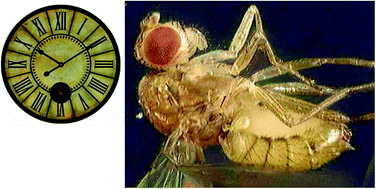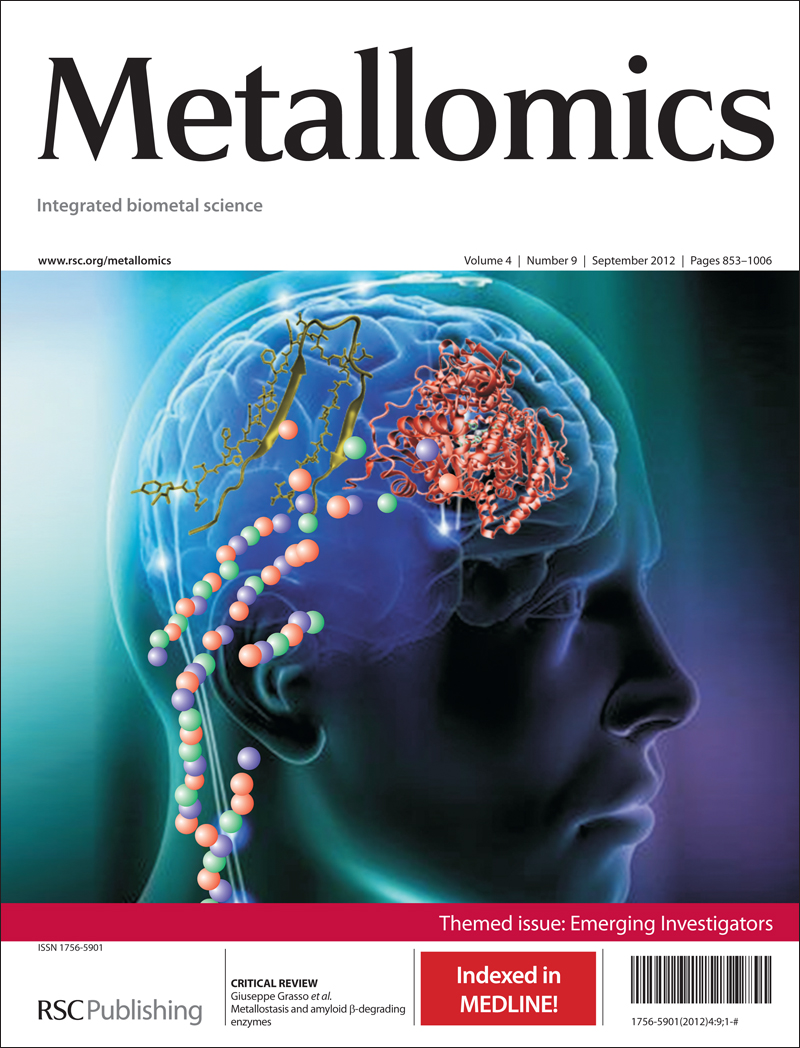Genes for iron metabolism influence circadian rhythms in Drosophila melanogaster†
Abstract
Haem has been previously implicated in the function of the circadian clock, but whether iron homeostasis is integrated with circadian rhythms is unknown. Here we describe an RNA interference (RNAi) screen using clock neurons of Drosophila melanogaster. RNAi is targeted to iron metabolism genes, including those involved in haem biosynthesis and degradation. The results indicate that Ferritin 2 Light Chain Homologue (Fer2LCH) is required for the circadian activity of flies kept in constant darkness. Oscillations of the core components in the molecular clock, PER and TIM, were also disrupted following Fer2LCH silencing. Other genes with a putative function in circadian biology include Transferrin-3, CG1358 (which has homology to the FLVCR haem export

- This article is part of the themed collection: Metallomics Emerging Investigators

 Please wait while we load your content...
Please wait while we load your content...